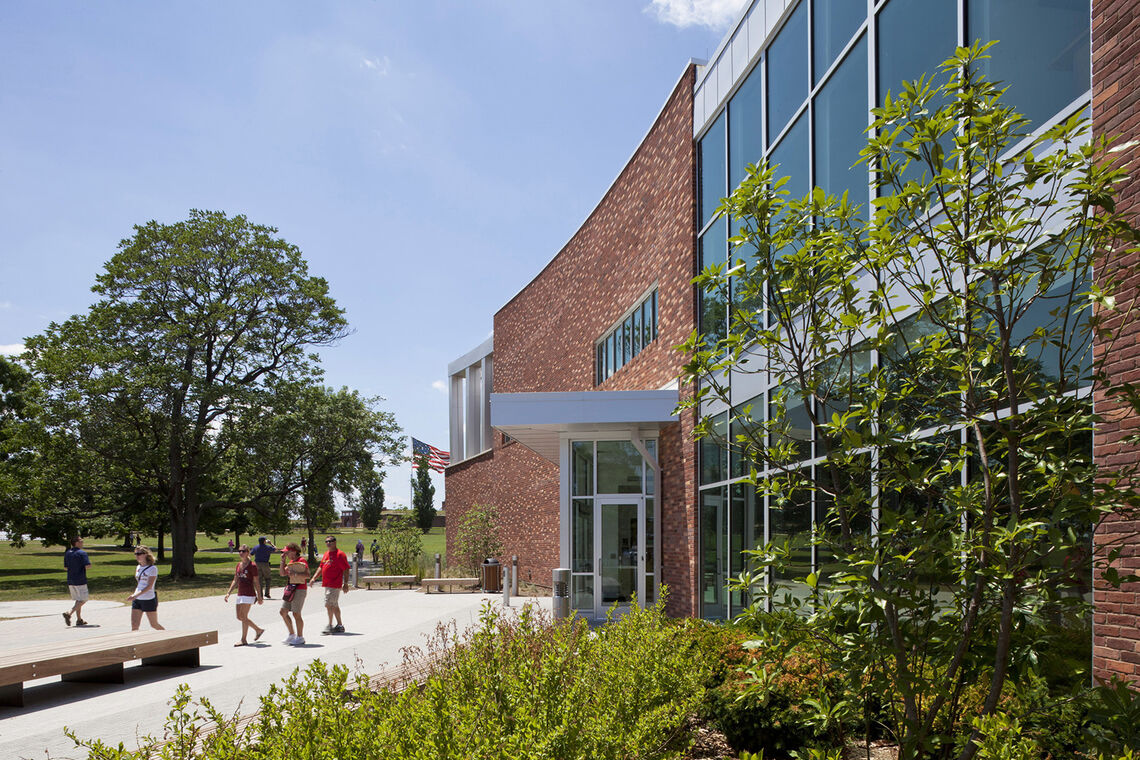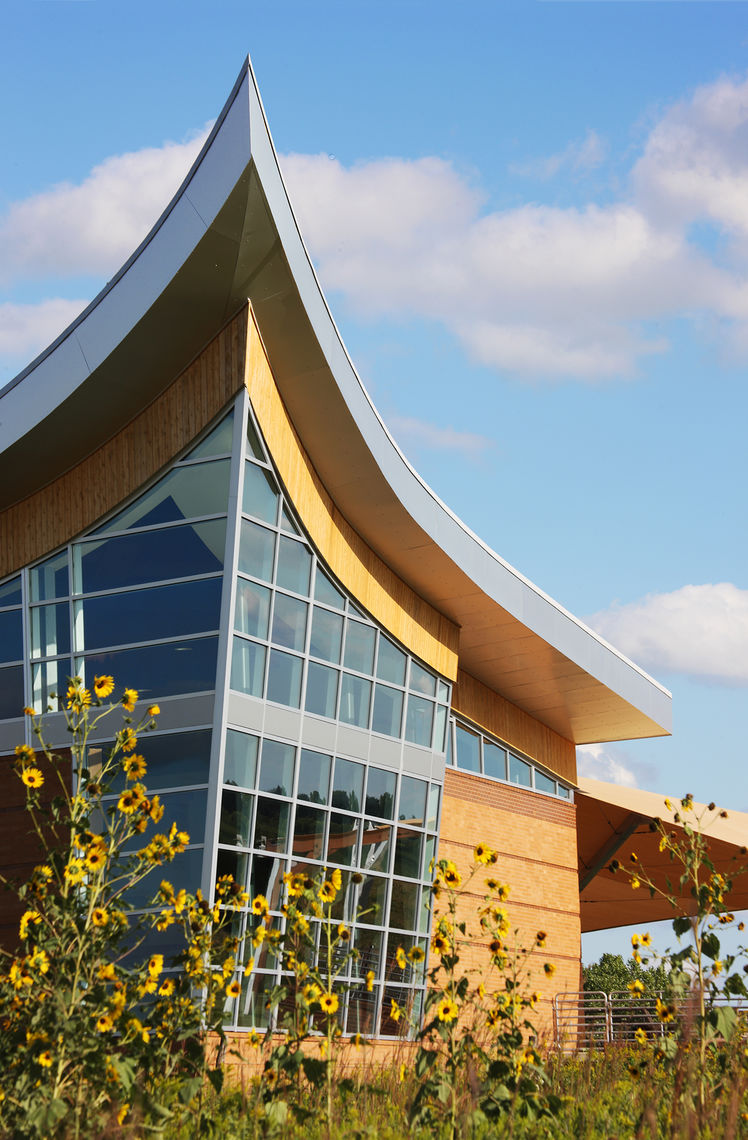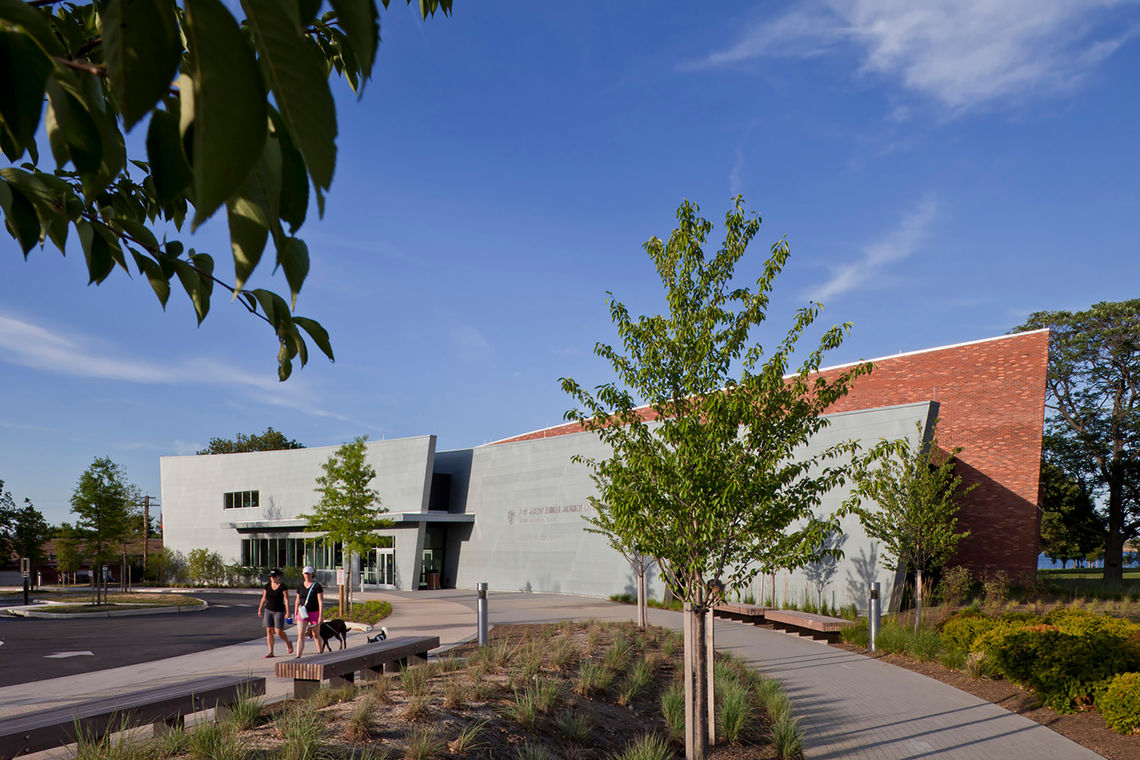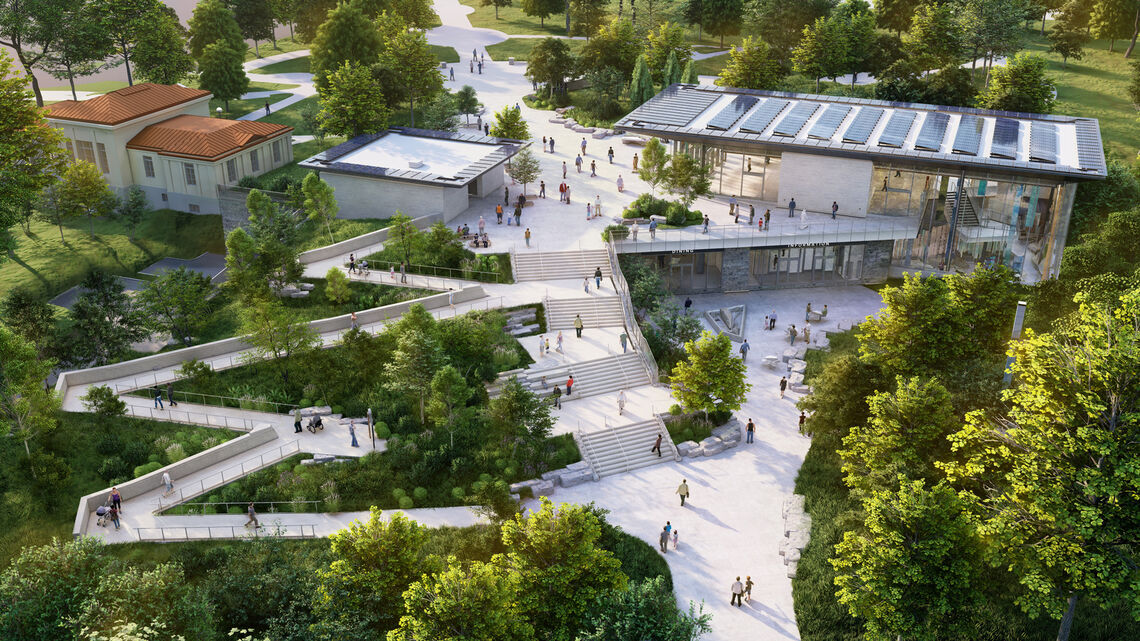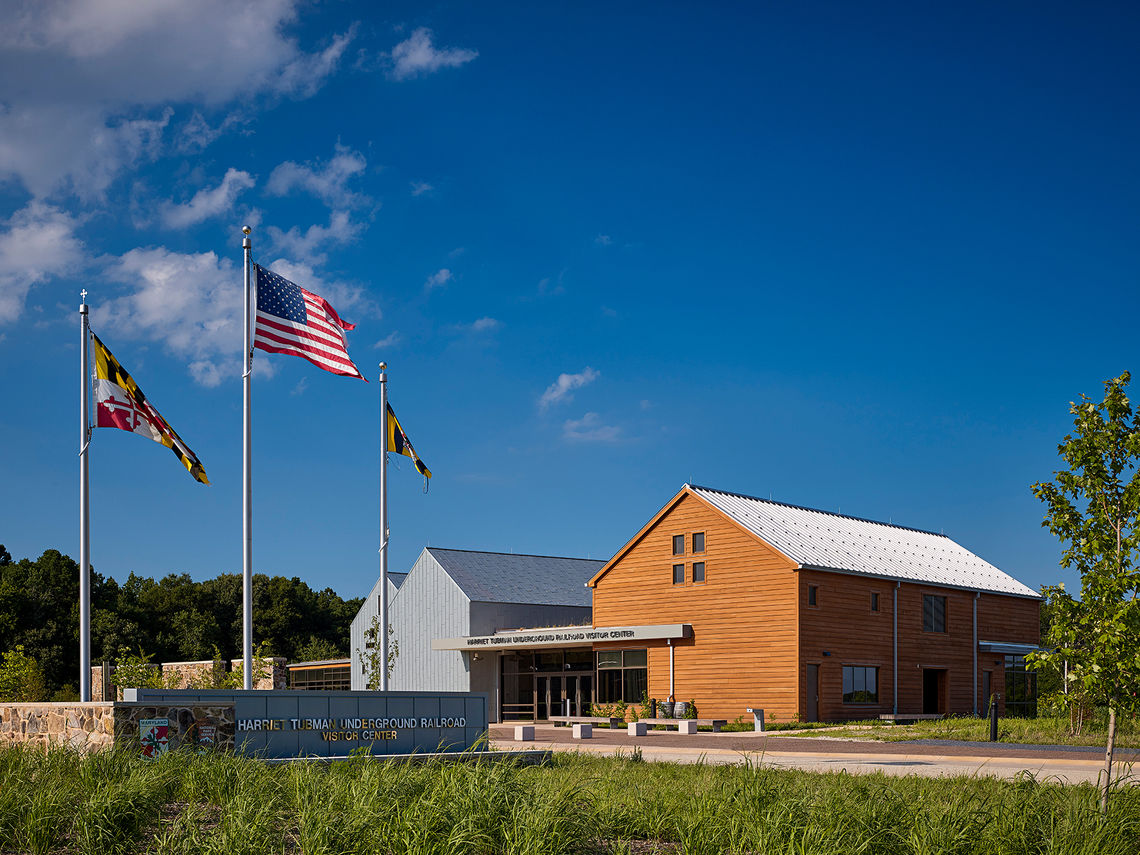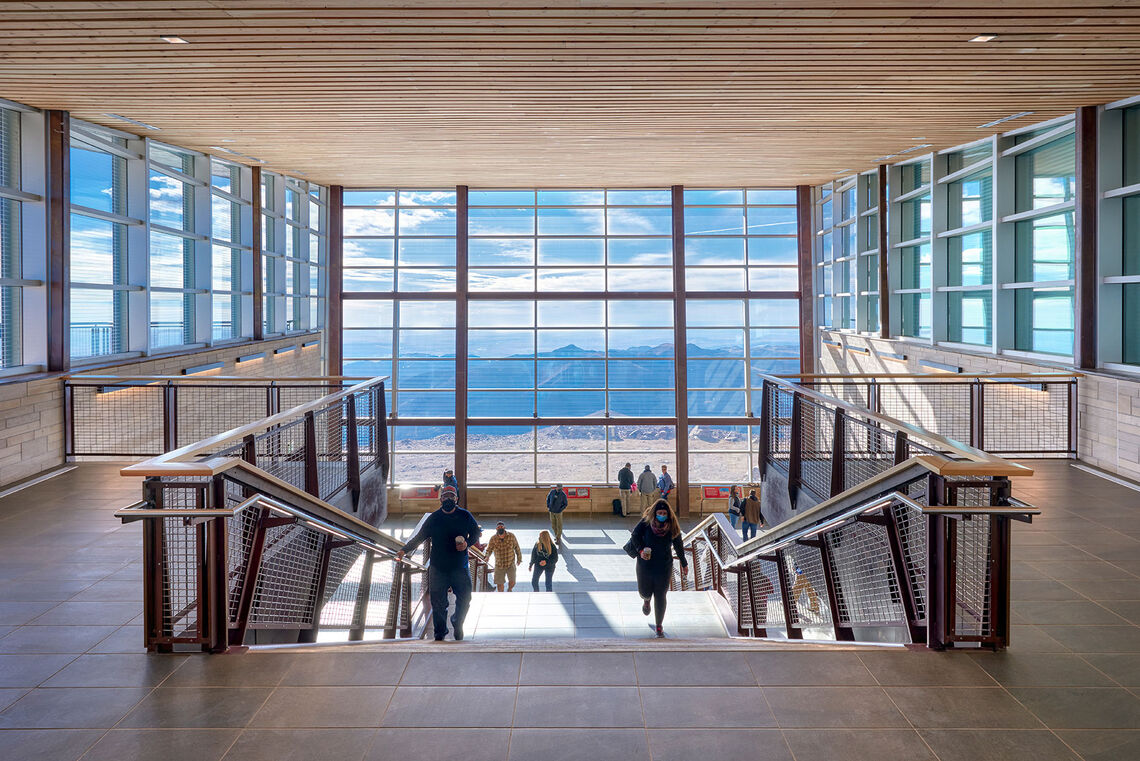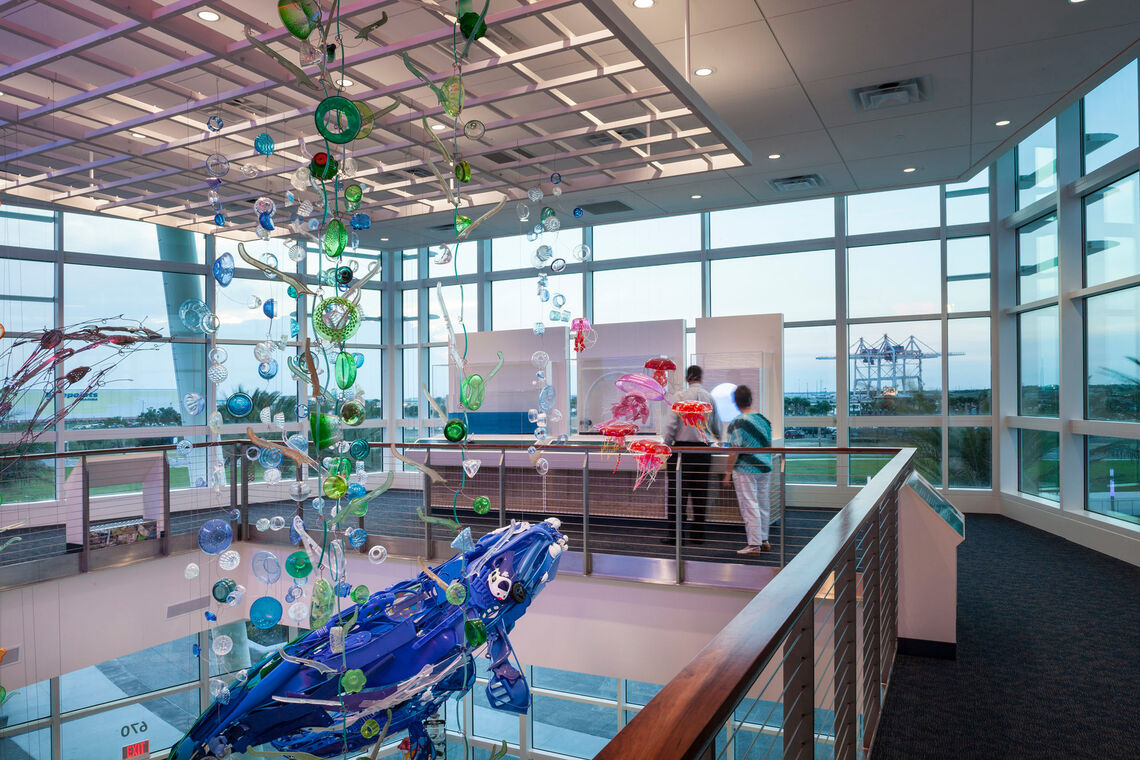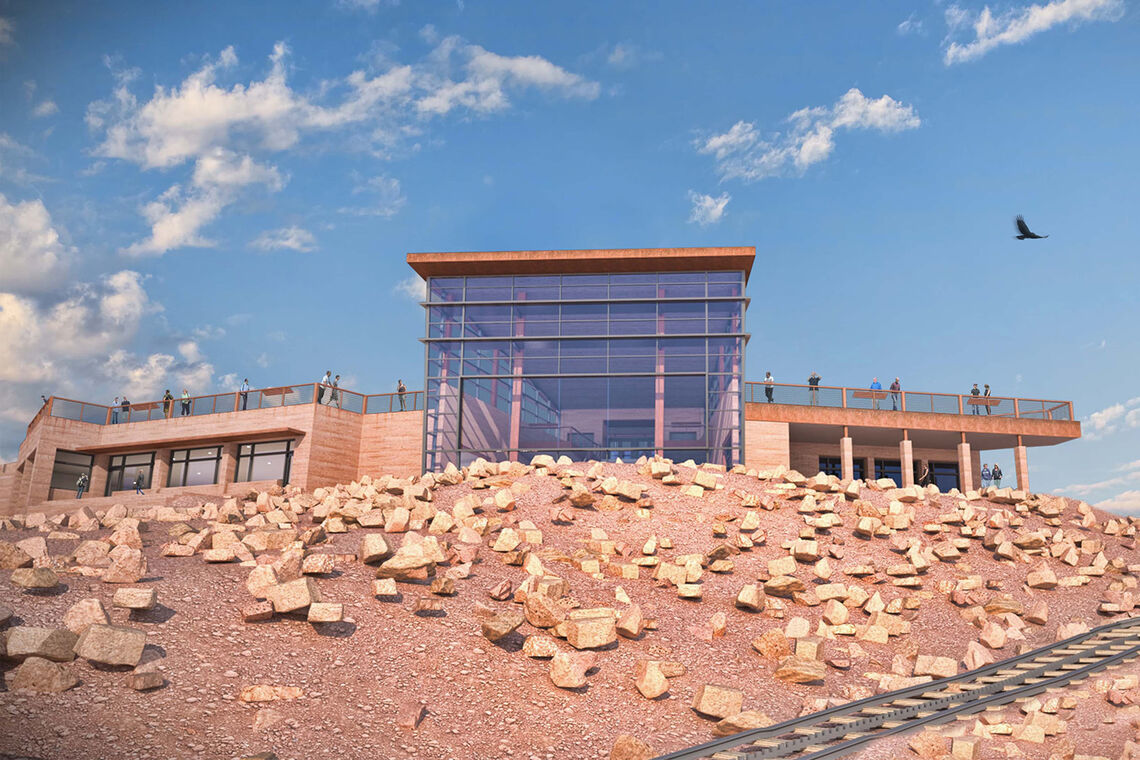The last few years have borne witness to some of the most rapid—and at times most jarring—cultural shifts in our nation’s long history.
If the experience has taught us anything, it is that we must find a way to keep our history in view, while also putting it in perspective. Monuments, landmarks, battlefields, whole landscapes, sites of struggle, of loss and of triumph—all of these require a new spatial framework, one that can transmit their meaning, not just to the present generation, but to generations to come.
Fortunately, architecture puts at least one invaluable tool at our disposal to further explore these relationships and foster productive and inclusive discourse. It’s called an interpretive center, and it’s a type of building our office has been researching, re-imagining, designing, and building for the last three decades, completing over 65 such projects.
Most people have been to an interpretive center of one kind or another. In its simplest form, it’s familiar to any American who recalls—as I certainly do—being dragged off by their parents on a long vacation drive, and stopping along the way at various spots of natural or historical interest. There, at the far end of the parking lot, was the visitor center; usually a modest, boxy affair, the building would often include a few dimly lit, not-very-engrossing exhibition displays, a gift shop packed with themed keychains and shot glasses, and perhaps a little literature and a few basic services to help guests navigate the site. They might not always have been inspiring, but those buildings succeeded on those terms at least, and they paved the way for what we refer to as ‘interpretive centers’ today.
Beginning in the 1990s, we started to think about this typology of interpretive centers in a new way. Put succinctly, the difference between the visitor centers of the past and an interpretive center is that, while the former is typically little more than a nondescript box with information inside it, the latter provides a comprehensive informational environment that begins with the building and its surroundings then extends to every aspect of its interior.
A good example of this is the Fort McHenry Visitor and Education Center in Baltimore. Designed by our firm in 2011, the project was intended to be a destination, a landmark that would drive traffic to the site and then actively engage visitors from the moment they arrive. At Fort McHenry, home to the original star-spangled banner, the structure’s curving, flag-like façade begins to tell the story of the place even before the guests go inside; once past the threshold, visitors progress through the interior in discrete, carefully planned stages, with spatial cues, lighting, didactic and interactive displays, and more all flowing together to produce a natural, understandable narrative. As in all of our interpretive projects, the aim in Baltimore was as much to convey the relevant facts about the site as to express its essential emotional import, turning the encounter with history into a moving, transformative experience.
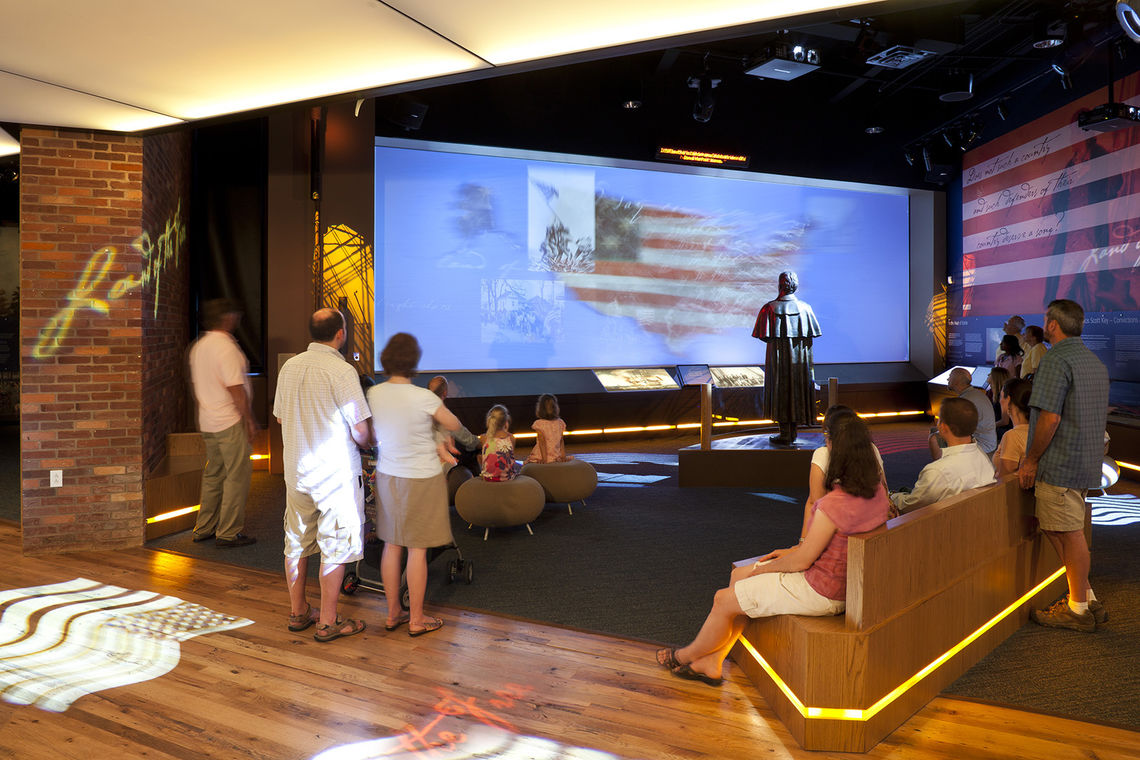
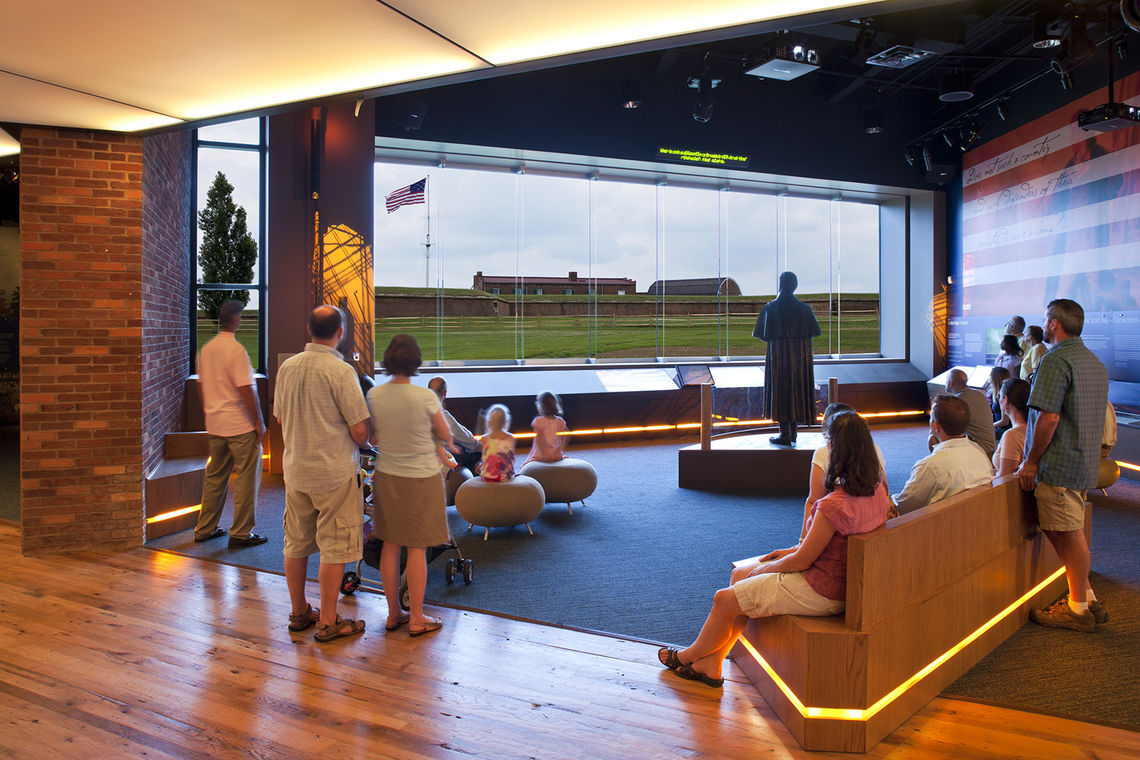
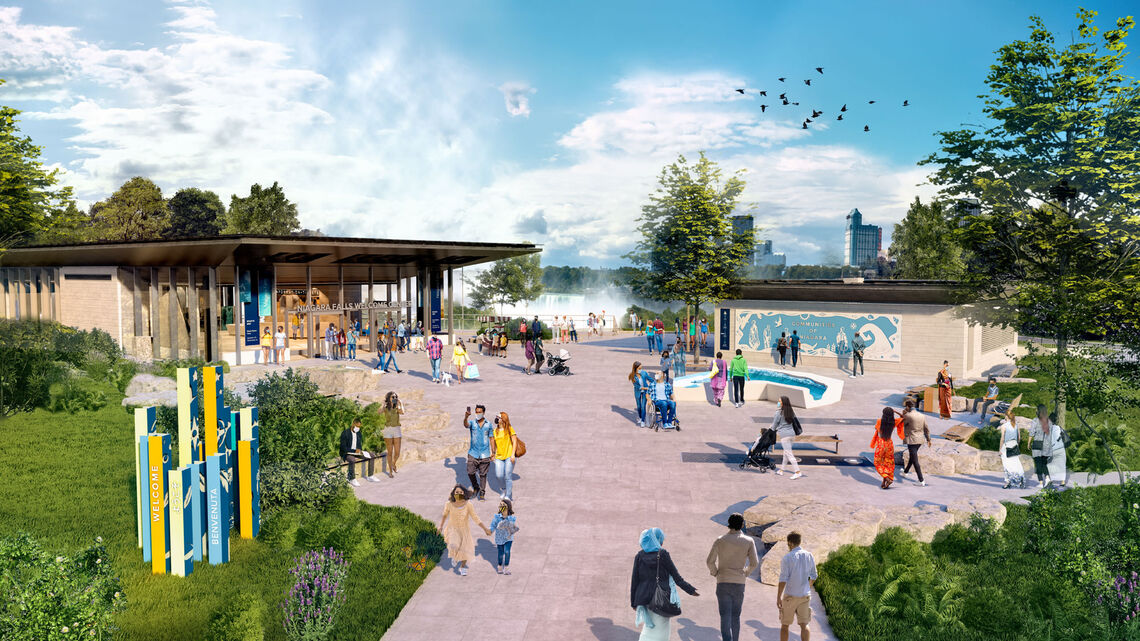
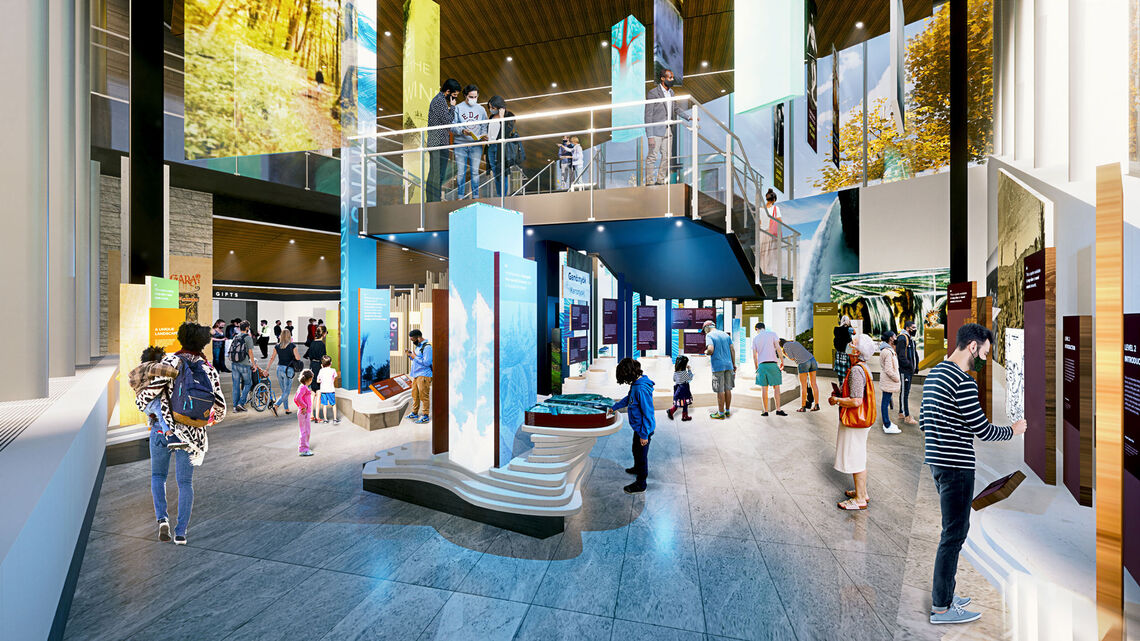
Beyond the building envelope, there are an array of strategies that can make for an effective interpretive center. Context is one. In the past, buildings like these were often located near the historical site but with no organic relationship to it; now, as in our recent Niagara Falls State Park Welcome Center, the focus is on forging a vital connection to the site, with views out to the Niagara River Gorge and the roaring cataract to allow the landscape to tell its own story. The variety of different media, ranging from artifacts to video to digital interactives, is also crucial to appeal to potential visitors of all ages and backgrounds, and to present them with as many options as possible to engage with the subject matter. And the opportunity to guide the user experience isn’t confined to the center’s interior, with intuitive wayfinding routing visitors around and through the site, we are able to extend the experience and activate the whole environment. Even amenities like dining, rest areas, and the gift shop (shot glasses and all) can be marshaled in the service of stirring, provocative space-making, along with many things ordinary visitors might not notice but that nonetheless reinforce the key themes of the site. Our Pikes Peak Summit Visitor Center in Colorado, for instance, meets the stringent ecological standards of the Living Building Challenge, thereby helping to preserve the very natural environment it celebrates.
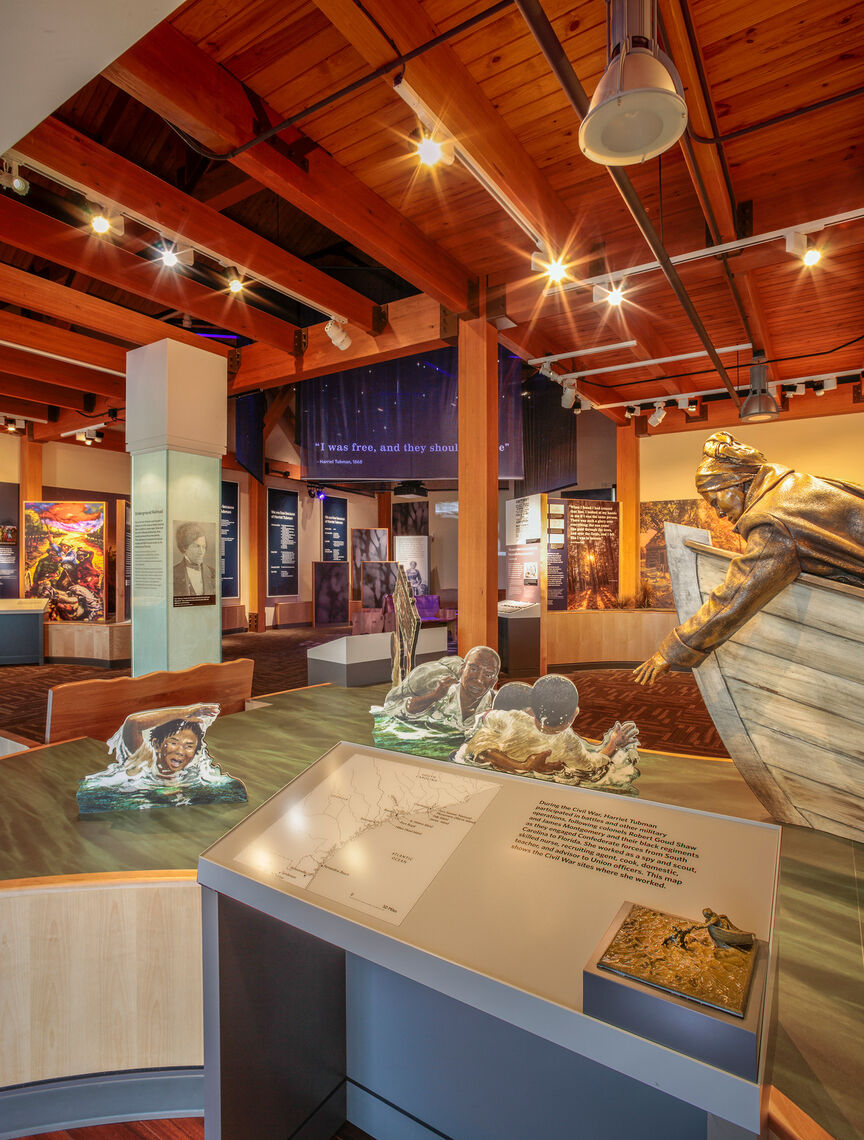
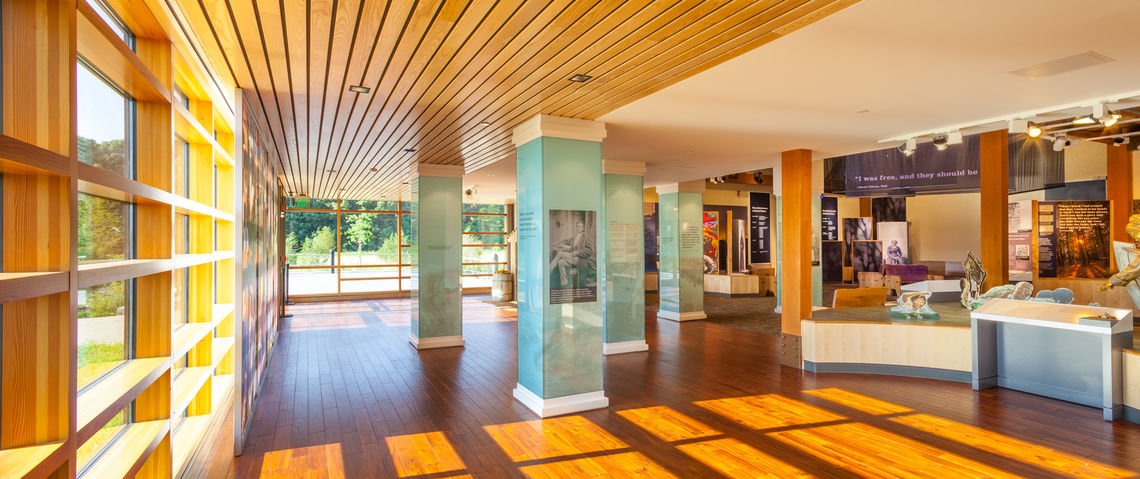
Ensuring the curatorial message hits home is obviously key and it is incumbent upon us to make sure it’s the right message, or messages, that get through. In our Harriet Tubman Underground Railroad Visitor Center in Maryland, there was a particular imperative to hear Tubman’s voice alongside the voices of millions like her desperate to escape from slavery. The challenge of inclusion—ensuring that everyone is present and accounted for, most of all those who were traditionally left out of the historical conversation—makes it all the more important to create interpretive centers, like Tubman, that guarantee different points of view and provide spaces for events and programming to bring in outside speakers who can broaden the center’s scope and invite further participation from the audience.
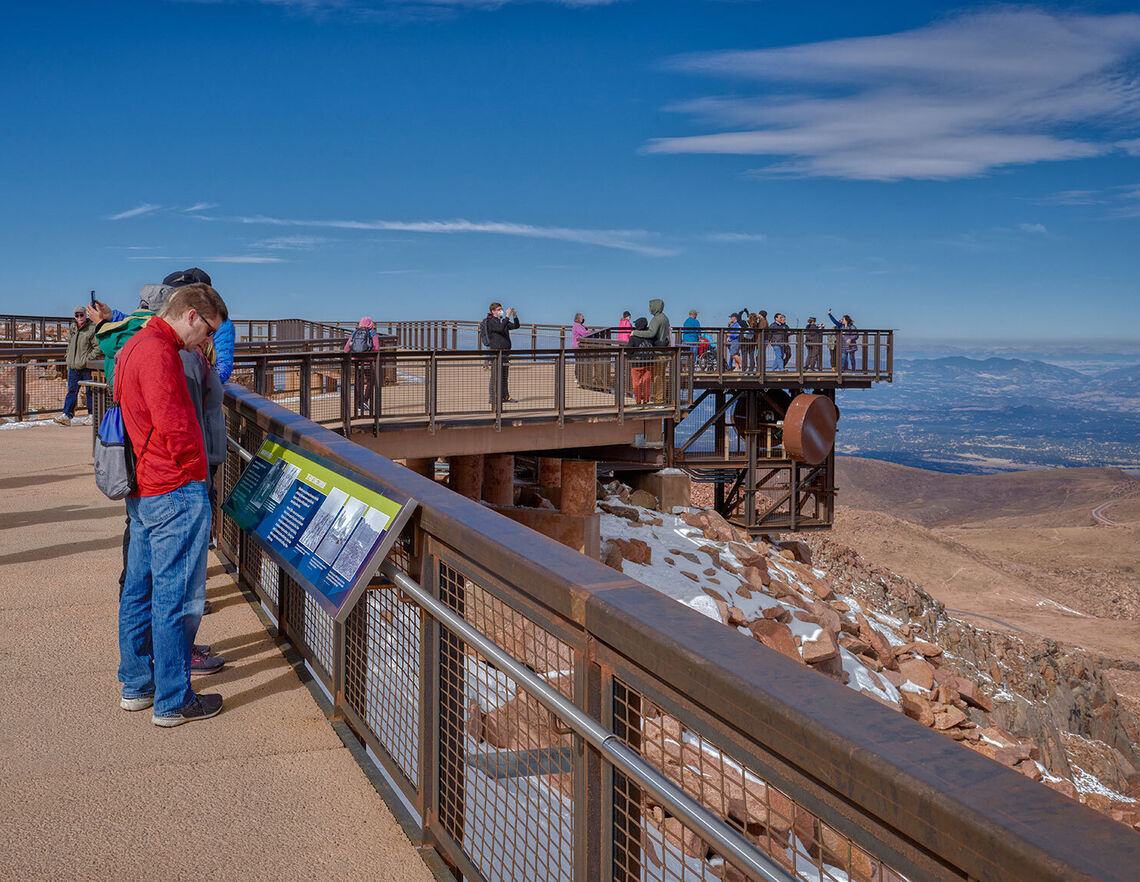
Equally as important is ensuring an equitable experience. The top of Pikes Peak would usually be all but inaccessible, especially for older visitors and those with physical challenges. But gentle grading and accessible overlooks elevated above the fragile tundra ecosystem, along with parking and a cogwheel train to carry guests to and from the summit, ensure the center and experience are as equitable as they are sustainable. The functional as well as the formal sophistication of any interpretive center can be measured by way of a few simple questions: For whom does this building make room? Who does it speak to, and whom does it allow to speak?
It is in answering these questions that the interpretive center, unique in the contemporary architectural repertoire, may be precisely what we need to escape our present cultural impasse. The forces that have been pulling so insistently at the fabric of our national life must somehow find expression, and be woven into our shared history. Taking the best developments in interpretive center design to date, and combining them with some of the most promising trends now emerging in the field—incorporating new forms of technology, including AR/VR; forging connections between institutions and sites, especially ones in the same city or region; and encouraging visitors to shape their own experience—interpretive centers could perform that delicate act of intertwining. With many more of them, big and small, appearing in many more of those contested places that so sorely need them, we could create a vast interconnected network, a nationwide, brick-and-mortar system for mediating between the past and present that could help forge a new national consensus. For a building type with such humble beginnings, it’s a lot to hope for, and it’s definitely a lot to expect of the architects tasked with designing them. But it’s a great place to start.
Originally published by The Architect's Newspaper on April 22, 2022.
